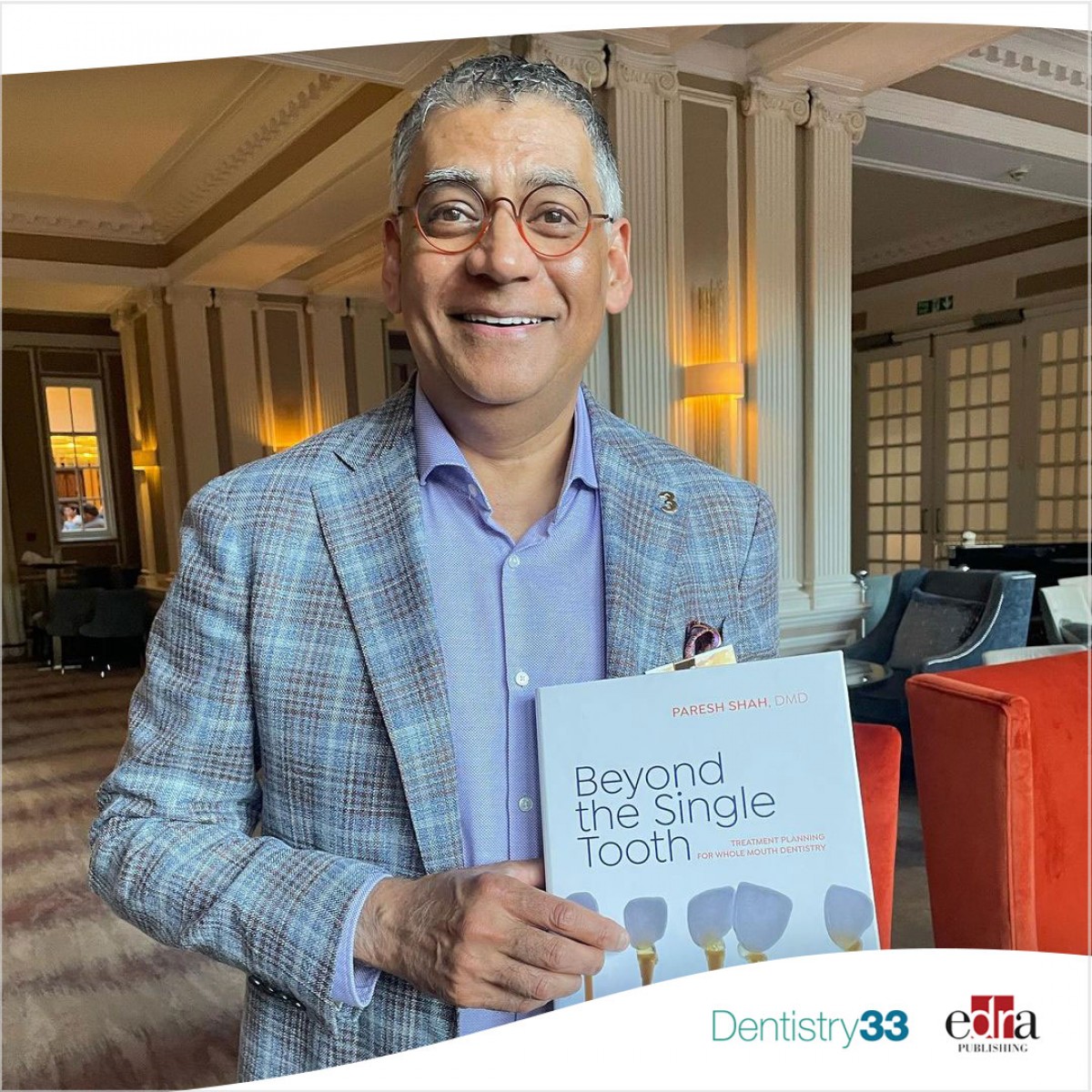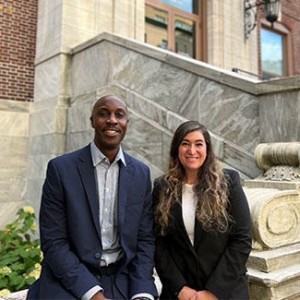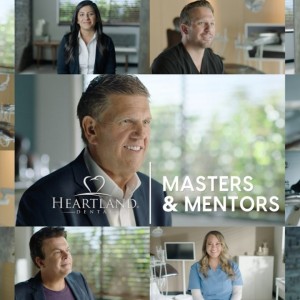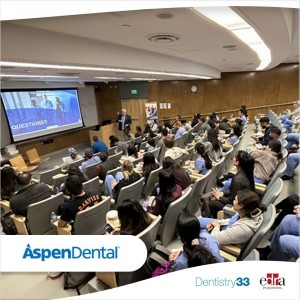
Dr. Paresh Shah provides a reminder to look ‘beyond the teeth’
“Beyond the Single Tooth” available from Edra Publishing
Mary Guiden
Dr. Paresh Shah, DMD, maintains a private practice in Winnipeg, Canada, where he focuses on implants, aesthetics and interdisciplinary care. Shah graduated from what is now known as the Dr. Gerald Niznick College of Dentistry at the University of Manitoba Dental School. He has a bachelor’s degree in microbiology and a master’s degree in physiology.
His passion for advanced education led him to found and direct a Seattle Study Club in Winnipeg with a colleague. Shah was recognized in late January 2023 with the Club of the Year award.
He has used digital technology in his practice for over 15 years and serves as a key opinion leader for several dental manufacturers. His new book, “Beyond the Single Tooth,” is available from Edra Publishing. Shah recently spoke with Dentistry33 about the new book, the importance of interdisciplinary care and mentorship.
Q: How do you define “whole mouth dentistry”?
Shah: To have optimal patient care and a successful thriving practice, treating patients in a “tooth by tooth” or reactive manner is not as conducive to long-term stability for patients. It’s no different than having a sore elbow, being prescribed some physical therapy and then continuing to have issues with that elbow. Clinicians need to address the root cause and find out why a certain health condition is occurring.
A comprehensive approach to diagnosis and treatment means that you look at everything that contributes to a problem or situation, rather than just fixing a symptom.
For many years, I learned how to fix teeth. You have a problem, and you fix it. Sometimes as the years go on and you see your work, you realize maybe you didn’t fix the problem and now there is another issue. What was the actual cause?
When it pertains to dentistry, this means looking at the periodontal foundation, and restorative materials we choose and how we use them. I also look at the jaw joint and esthetics. Looking at everything in a comprehensive manner allows us to provide a more thorough diagnosis and offers possibly more long-term treatment options.
Q: What’s the best way for dental students and dentists to learn this comprehensive approach?
Shah: There’s not enough time in our four years of dental school to learn how to look at things in a comprehensive manner. We’re so focused on learning different technical procedures and how to prepare, restore and treat teeth.
We don’t get enough time in school to spend time diagnosing, looking at the whole mouth and other systemic factors that could contribute to long-term stability and success for our patients.
I’ve talked with dentists over the years who have said: I’m running a practice by myself and can’t compete with a big practice across the street that has 10 dentists working evenings and weekends. I understand these challenges.
If we’re working and we have a practice that looks at everything in a comprehensive way, we can slow down a bit, focus on a smaller number of patients. You’ll have happier patients. But some of the treatment for these patients may take months and years.
You can’t do all of it at once. Some dentists aren’t sure how to make that transition. Often, it involves working with others — an orthodontist, oral surgeon, periodontist or endodontist.
Here’s a simple example – you’ve got a patient with some crowding of the teeth. This patient wants a straighter smile. One of the options is to place a crown, but it may look too skinny because of the space. The patient might subsequently need a root canal down the road. But if you take the time to work with or refer the patient to an orthodontist, you could have a successful comprehensive approach that meets the patient’s needs.
My book explores how you can work with specialists to optimize treatment, addressing the desires of the patient and your desires as a restorative dentist. You’ll also learn how to accept suggestions from the specialist. Sometimes it will change your treatment plan. The bottom line is: What’s best for the patient?
When I take a comprehensive approach to dentistry, I’ve found it’s more fulfilling. Patients that accept this approach, they’re more inclined to partner with me in their care if they see the value of what we’re trying to do for them.
Q: What else can people learn from your new book, “Beyond the Single Tooth”?
Shah: My mentors helped me look at things in a different way, which is part of the reason why I began using this comprehensive approach. It made me change some things about my practice, but it also afforded me the opportunity to stage treatment for patients over time.
A lot of my patients can’t afford to shell out large amounts of money in one shot. If I tell them they need $15,000 to $20,000 of dental work, they can’t afford that. But I can propose that we look at staging treatment. We will send you to a surgeon to do some bone grafting, or an orthodontist who can help straighten your teeth. Those are the approaches that I describe in the book.
The book provides different common scenarios of how this approach works in general practice. It prompts the clinician to ask themselves: How might I look at things differently to address my patients’ problems? What’s the best place to start collaborating with the appropriate specialists about some of the treatment?
The initial chapter explains how I was practicing dentistry 20 years ago. My approach was not multidisciplinary. I knew how to fix teeth. I didn’t necessarily engage with patients in the way that I should have. That was outside my comfort zone at the time.
But then I started gaining knowledge and expertise, learned more about the strengths of specialists, and how I could collaborate with them. Interdisciplinary care needs to be intentional and structured. Some of the cases in the book provide details that may not necessarily fit your practice, but it will provide you with an idea of where you need to go.
A lot of the book is geared to stimulate thought, to demonstrate that we can do more as a collaborative team — working directly with the lab and various specialists.
Q: What’s the response been like from your patients about this medical approach?
Shah: It is important to convey the value of this interdisciplinary approach by explaining the big picture. I probably have a few less patients now than I did five years ago. But I’m also doing more treatments over time, collaborating with oral surgeons, orthodontists, periodontists and endodontists.
Q: Tell us about the Seattle Study Club, and what that means for your practice and relationships with other clinicians. And congratulations on your recent award for Club of the Year!
Shah: The Seattle Study Club has provided a foundation to implement comprehensive interdisciplinary diagnosis and treatment. I’ve learned a lot being a part of the group and running a Study Club with a friend in Winnipeg who is an orthodontist. We encourage one another and students or other people we’re mentoring to look at things globally and not just regionally.
Is there something we can do to create a better outcome than just looking at teeth? “Beyond the Single Tooth,” my new book explores all the facets — the gums, face, mind, position of the teeth, position of the gums, medical history, all those things play a role. Will they impact the outcome?
As another example, a dentist might fix one broken tooth because of decay, but are there potential timebombs in other areas? Maybe your patient has dietary issues. Maybe the patient has a heavy bite force that’s wearing their teeth down, or maybe they have some susceptibility to tooth decay. The book encourages people to consider looking at other aspects of a patient’s health.
Q: Could you talk a little about the importance of having a mentor or mentors?
Shah: There’s not enough time in dental school to teach interdisciplinary dental care. A lot of that comes from working with mentors. If you’re fortunate to have a professor or faculty member in school who forces you to really think things through, take advantage of it and ask a lot of questions.
A lot of students — including me when I was in dental school — are focused on fulfilling minimum requirements to graduate. I’m not convinced that’s changed much since I was in school. And when you get out and first start practicing, it can be lonely.
It’s important to have good mentors and you should pick courses that teach you to diagnose your patients in a comprehensive manner.
I would suggest having mentors in school but also outside as well, to get different perspectives. Young dentists, it’s important to find a practice where a dentist is willing to mentor you, ask you questions and be supportive. It’s important to have mentors where you’re working locally as well as outside your city.
Dentistry is a business. Having a bit of business mentorship can help, too.
 Related articles
Related articles
Editorials 26 June 2025
As she prepares for her 20th reunion, HSDM alumna reflects on what drew her to HSDM and the impact it had on her career.
Products 10 January 2025
Heartland Dental Launches “Masters and Mentors” Campaign to Empower Professionals
Heartland Dental, the nation’s leading dental support organization (DSO), has announced the launch of its new brand campaign, Masters and Mentors, which reflects its deep commitment to its...
The University of Washington is the most recent university to tap doctors in the Aspen Dental network to serve as adjunct faculty and mentoring clinicians in its clinical externship rotation for the...
Endodontics 28 February 2023
Chirico works in private practice in Milan and Desio, Italy. Her principal areas of expertise are digital dentistry, endodontics and restorative dentistry. ...
Prosthodontics 12 August 2025
Previous research regarding dental students has found modest predictive value in preclinical didactic course grades in predicting clinical performance, but systematic assessment of students’...
 Read more
Read more
Editorials 10 October 2025
With proud smiles and crisp white coats, ninety-three learners from the DDS Class of 2029 and the International Dentist Pathway Class of 2028 marked the start of their dental careers at the UCSF...
Periodontology 10 October 2025
Continuous professional development (CPD) in Periodontology refers to the overall framework of opportunities that facilitate a life-long learning practice, driven by the learner-practitioner and...
TheraBreath, the #1 alcohol-free mouthwash brand in the U.S.*, has introduced a new line of dentist-formulated, clinically tested toothpastes designed to support professional oral care...
News 10 October 2025
New officers and trustees were installed at the Minnesota Dental Association’s Leadership Conference on September 19 in Minneapolis.
News 10 October 2025
Smartee Denti-Technology today announced that Professor Gang Shen, its Chief Scientist and Executive President of TaiKang ByBo Dental, has once again been named to the World’s Top 2% Scientists...















